Today was day two of our minibeasts study, and it was AMAZING! We began with an immersion in minibeast books last week. The kids explored all sorts of books, and we came up with a list of questions that we want to answer over the course of the term. We then had a blast searching for minibeasts out in the yard! (For those who are not Australian, like me, a minibeast is a small invertebrate. So we are learning about spiders, insects, and snails.)
In my excitement for this unit, I took my lovely daughter to a handful of pet shops this weekend to get some “creepy crawlies.” We bought a spiny leaf stick insect, some crickets, and some king mealworms. My students have been thrilled to host these little guys in our classroom over the week, and they love watching them move around their aquariums and listening to the crickets chirp.
Today for our focused lesson we worked with the crickets. I got out a handful of “bug viewers” and put one cricket into each viewer. The bug viewers have some clear plastic areas and some magnified areas, so the kids could get different views. We talked about being kind to the crickets and not shaking or hitting the viewers. I then let the kids observe the crickets.
I also gave them a Cricket Observation Form, which you are welcome to grab for free! They had to draw their cricket, write an observation, and count the cricket’s body parts. I reminded the kids to draw exactly what they saw, as scientists do. The kids were excited to notice their cricket’s specific features (some crickets had uneven antennae, and one had a broken/missing antennae.)
After their observation time, we looked up some cricket information to ensure that we had listed the correct number of body parts. We were surprised to discover that crickets have five eyes (according to Cricket Breeding Made Easy). They have two compound eyes, which allow them to see in multiple directions at once, and three simple eyes, which allow them to see light and dark. We also learned that crickets have four wings (one set of fore wings and one set of hind wings.) It was important to follow up their observations with a little fact finding!
We had such fun with our observations! I can’t wait until next week. Don’t forget to grab the free Cricket Observation Form!

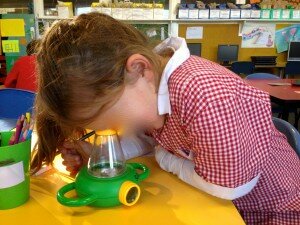
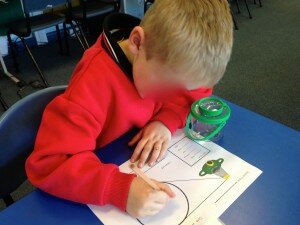
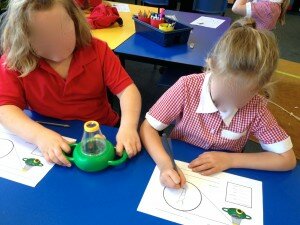
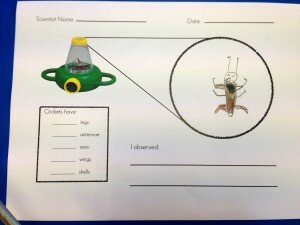
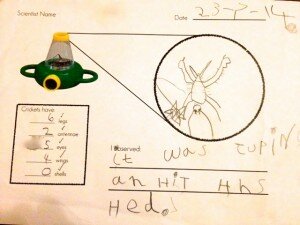
what a perfect tie-in for the very quiet cricket!
Indeed! Great idea.